Features
My memories of Peretz Shul
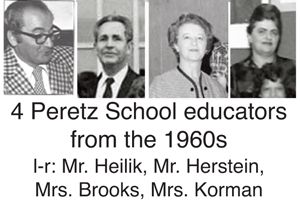 By KINZEY POSEN It was a late Friday afternoon at Peretz Shul in 1964 or so. A good friend of mine at the time whose Yiddish name was Moishe said, “That’s it! I’m not coming back to school on Monday, I’m out of here!” Ok, as an 11 year old, he might have said it in a slightly different way. It was the first day of school in September and we were just about to go home. “Sure you are Moishe, I’m sure you’ll be back on Monday,” I told him.
By KINZEY POSEN It was a late Friday afternoon at Peretz Shul in 1964 or so. A good friend of mine at the time whose Yiddish name was Moishe said, “That’s it! I’m not coming back to school on Monday, I’m out of here!” Ok, as an 11 year old, he might have said it in a slightly different way. It was the first day of school in September and we were just about to go home. “Sure you are Moishe, I’m sure you’ll be back on Monday,” I told him.
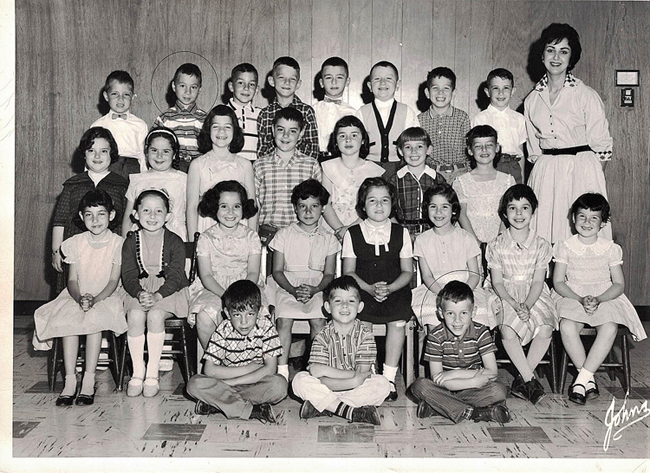
Kinzey’s Grade 1 Peretz School class circa 1960
(Thanks to Sandy Shefrin for helping with identifying almost everyone; comments supplied by Kinzey)
Bottom Row crosslegged, left to right: Arthur Greenspan, unidentified, Matthew Levin (a.ka. Moishe in the story)
Second Row (l-r): Paula Wolfman, Rosa Scyzgiel, Shirley Starek, Myra Miller, Faye Golubchuk, Ruthie Rosenzweig,, Honey Leah Berman, Marcie Fleisher
Third Row (l-r): Diane McKay, Lucy Baumel, Janice Goldberg, Howard Kaplan, Sandy Shefrin, Heather Wallace, Pammy Zimmer (Kinzey’s wife, Shayla Fink’s first cousin, a beautiful person (alev hasholem)
Top row (l-r): Sidney Lieber, Martin (Kinzey) Posen, Sheldon Weidman, Harvey Zahn, Harvey Koffman (my first cousin) , Sidney Shoib, Morris Glimcher, Shawn Zell, Miss (Claire) Nelko (who is now Claire Breslaw)
Come Monday, true to his word, my friend did not come back. He had entered an alternate dimension it seemed; he was finished with Peretz Shul! Unheard of! Impossible! How did he do it? Moishe’s act of sedition was a reaction to the Yiddish teacher we had been blessed with that year and he was done. All of us in the class were in awe and Moishe, no worse for wear, having left the school, went on to become a respected ambassador for Canada’s Foreign Service.
A little while back, Bernie asked me to write about Peretz Shul from a different perspective: My own, as a student. I have often wondered why this institution. for those of us who went there, lives so large in our memories. Full disclosure: My grandmother Katya Posen Z’l, nee Gurarie, was one of the founders of Peretz Shul and a lifelong member of the Muter Farein – the women’s organization that helped establish the kindergarten and supported the school.
My father, Abe Posen, attended the school as did his sister, my aunt, Goldie Zuidema Z”l. My dad often told me stories of how various teachers at Peretz used to rent one of the rooms in their house on Burrows. To put it mildly, our family was steeped in Peretzness.
My era began in 1957 when I attended nursery school and then, kindergarten. To this day, I can still smell the matches when our teacher lit the Shabbat candles on Friday and we laid out our little mats to have a nap on. Being a socialist school for the most part, you would think Shabbat would not have been part of the school experience, but I have so many great reminiscences of those two years from making little coloured paper rings several metres long, to receiving the right colour star if we behaved. I loved getting those silver and gold ones alongside my name on the wall – wonderful, warm memories.
Our principal in those early days was Chaver Herstein – an imposing man with a wonderful head of hair and a bit of a temper. We called all our teachers by either “chaver” or “chaverteh” which, in this context, translated to “comrade”. We also called them Leher or Leheren – teacher in Yiddish. Our school was located at 601 Aikins, between Inkster and Polson Avenues. How do I remember the address? Early on as soon as we could write, we always wrote the address at the top of the left corner of the sheet of paper. Now, the building is a health community centre. Once we entered Grade One, our days were separated into half day Yiddish and half day English classes.
Grade One for me – and I am sure for my classmates, was a truly seminal experience. Pushed out of the warm bosom of kindergarten, Grade One meant getting down to serious work. Reading, see Dick run, see Jane run, see Dick and Jane run, writing, singing and my own personal challenge………arithmetic. Our Yiddish teacher, Miss Nelko, was the most beautiful woman who genuinely cared about her students. We loved her and she laid the groundwork for us learning Yiddish and how to be little menches and menchettes. Many years later, Shayla and I received a call about playing a wedding for an older couple. They came over to our house one evening and as we planned the event, it occurred to me that I knew who this woman was: My beloved Miss Nelko, some 40 years later. What a reunion it was!
Our English teacher, on the other hand, had a different style of teaching that could be best described, as adversarial. I renamed her Tyrannosaurus Rex and the invisible scars are still with me. Her approach to learning arithmetic was to say the least, extremely challenging. I was one of those kids who learned math in a different way and in those days, kids such as myself fell through the cracks and we fell deeply. All I remember is after a short explanation of one plus one equals two, etc., we all had to stand up by the blackboard as T Rex wrote a problem on the board. We could not sit down unless we put our hands up and answered correctly. Guess who was often the last kid standing? Me, of course, and I eventually memorized it all so I could finally sit down.
Another time, T Rex distributed to each of us a sheet of paper for some writing project. She gave me what we called at the time “grade one” paper. It’s where the lines were printed with one bold line and two lighter lines and then another bold line. It also had big wood chips in it. I noticed that she was also giving out what we called “grade two” paper. These were all symmetrical bold lines and I wanted one. When she finished giving them out, she asked if everyone received one and me, being me, said, “I didn’t.” My six-year-old brain conveniently forgot that my desk was in the front row and I had scrunched up the grade one paper into a ball and cleverly thought she wouldn’t see it in the wood support for the desk.
As I put my hand up and told her I didn’t get one, she approached my desk in a threatening way, reached into the desk support and said, “What is this?” I was fully chastised, and T Rex bellowed, “You will only get grade one paper for the rest of the year.”
The reality was, in those days, especially in the context of a parochial school, you sometimes had people teaching who were not trained and did not have the skills to do the job. Not only that, more than a few were survivors of the Holocaust and we eventually learned that they experienced terrible horrors in the camps and ghettos.
That being said, I had several wonderful teachers, whose voices to this day still reverberate in my head and I often reflect about their ability to connect and elevate the students.
Mrs. Gold, Mrs. Brooks and Pascal Fishman were some of them. Chaver Fishman came to us from Buenos Aires and was one of our Yiddish teachers. He had a great capacity to see potential in students and encourage them. Another of our teachers, Mrs. Wallace, taught us English and her daughter was in our class for years. The family wasn’t Jewish, but Heather my classmate, spoke Yiddish like a pro. I remember one of our later Yiddish teachers, Mrs. Korman, taught us “Zol Nit Keynmol” the Warsaw Ghetto Song, and led us in a procession to St. John’s Park in the spring, while we sang that song and others.
The year at Peretz Schul was highlighted by two major events. The annual essay contest in Yiddish and English, and the graduation, which took place towards the end of June. For each of those occasions, the auditorium would be absolutely packed and very hot. As students, we often escaped outside to cool off in the lane and we could hear what was going on by the open side doors.
The cultural offerings at Peretz were in my opinion, outstanding. We were taught so many great songs, we acted in plays and we created art. Jewish holidays were celebrated with a Yiddishe taam (Yiddish flavour). Since my Hebrew name was Mordechai/Motel, I always got the part of Mordechai in the Purim play. The music component was delivered by Chaver Bronstein or Mr. Brownstone as he was known at Talmud Torah. His classes were always held in the auditorium, where he’d stand by his easel flipping the song sheets written in Yiddish and we’d follow the words as he used his pointer. Contrary to the Talmud Torah choir experience, he never gave us names or hit us. After he retired, Mrs. Udow took over and when I hoped to join the choir, she said, “Modechai, your voice is changing, perhaps another time.”
After the principal Chaver Herstein retired, Mr. Heilik who was previously at the Calgary Peretz Shul became our new principal. He was an interesting man and because of my ‘occasional’ naughty behaviour, I got to know him a little better than most students. He was an artist. His medium was oil painting and I remember, on one occasion, we were taken out of our class and brought to the auditorium. When we arrived, we saw that all four walls had been covered with his paintings. There were dozens of them. It was a full-blown exhibition of his work.
I bring this up because I became the class artist at Peretz and my teachers often ‘commissioned’ me to draw and colour huge murals in the hallway of the school. This gave me the opportunity to get out of class. Chaver Heilik would always come out of his office to check out my work. My artistry was far below his level, but he was always encouraging and interested in what I was doing.
In my day, we all graduated from Grade Seven and you had the choice of continuing in what was called Mittel Shul. These classes were held after 4 o’clock, after you finished English school. No one in my class went to Mittel Shul and we felt sorry for those who did as they arrived at four, just as we were leaving.
For me, and I’m sure others, the experience of attending Peretz Shul, wasn’t truly appreciated until after we graduated. The real world out there wasn’t as warm and friendly as it was at 601 Aikins. I do know that the school gave me the education that my Baba and other founders were hoping to achieve: an ability to speak Yiddish, a love for the language, Jewish history known as Yiddishe geshicteh and above all, an appreciation for the Jewish people and our incredibly rich journey. I also had my Peretz Shul family, the 12 or so students in my class that I spent 35 hours a week with for nine years. We all take something different away from the experience, but I can guarantee you, many of us, including my friend Moishe the ambassador, will always carry Peretz Shul memories with us for the rest of our lives.
Post script: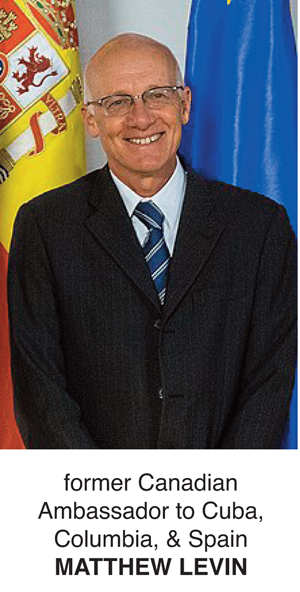 Ed. note: It didn’t take me too long to figure out who the “Moishe” was to whom Kinzey refers in his article. I was actually friends myself with “Moishe”, although I knew him better as Matthew Levin.
Ed. note: It didn’t take me too long to figure out who the “Moishe” was to whom Kinzey refers in his article. I was actually friends myself with “Moishe”, although I knew him better as Matthew Levin.
Matthew was always very independent-minded – even as a kid. That being said, he went on to an illustrious career in Canada’s diplomatic service. Among other posts he held, he was Canada’s Ambassador to Columbia, Cuba, and most recently Spain.
It was while he was Ambassador to Cuba that Matthew, along with his wife, Rosealba, played an instrumental role in helping Cuban Jews emigrate to Israel (since Israel and Cuba did not have diplomatic relations).
When I read Kinzey’s story I decided to send it to Matthew – before I outed him as the “Moishe” in the story. Matthew was pleasantly surprised to see that Kinzey mentioned him in a story and even further that he referred to him as “Moishe”.
In my email to Matthew I mentioned that the last time I had attempted to contact him was when Stephen Harper was Prime Minister and Matthew was Canada’s Ambassador to Cuba. At the time, some low level functionaries in what is known as Global Affairs Canada interceded and said that I would not be able to communicate directly with Matthew. Instead, I was told, I could submit any questions that I had to Global Affairs, they would vet them (no doubt looking for anything that might potentially embarrass the government, such as asking about Matthew’s boyhood years in Winnipeg).
So, when I reached out to Matthew – again, this time after reading Kinzey’s piece, I said that I didn’t know whether he would even receive my email since I suspected “apparatchiks” in the government would see it first – and probably attempt to prevent me from communicating with him directly – again.
I was surprised then, to receive a very warm response from Matthew – in which he explained that he is no longer under the supervision of government “apparatchiks”.
Here’s what Matthew Levin wrote to me, in part:
Wonderful to hear from you! I’m so glad you made the effort to reach out.
I finished my posting to Spain a couple of months ago and am now back in Ottawa and transitioning to retirement. So no more apparatchiks.
First of all, I hope you’re well and coping successfully with these strange times.
Your lovely message brings back all sorts of very fond memories. It’s a long time since anyone called me Moishe (often shortened to Moish back then). I never saw most of my Peretz Shul classmates after I left the school, as Kinzey recalls, at the start of Grade 5 (a long story). Kinzey was one of the very few I did see occasionally, including a few times when he was playing with Finjan. But most of the others I completely lost touch with. Now I sometimes wonder what has become of many of them. It’s really heartwarming to think that Kinzey (Martin at the time and I believe he was Mordechai in Yiddish, or maybe Mendel) remembered me as he was writing this story. Since you and I and our group of friends never called each other by our Yiddish names I’m surprised, but delighted, that you thought of me when you saw this reference to a Moishe.
Thanks so much for sending along Kinzey’s story. I’m sending you this reply before having read it, because I didn’t want to delay getting back to you, but I’ll certainly read it with great interest and undoubtedly pleasure. I really feel honoured and delighted to be included. If you’re in touch with Kinzey, please thank him and give him a big hug – virtual of course for now – from me.
Features
A People and a Pulse: Jewish Voices in Jazz and Modern Music
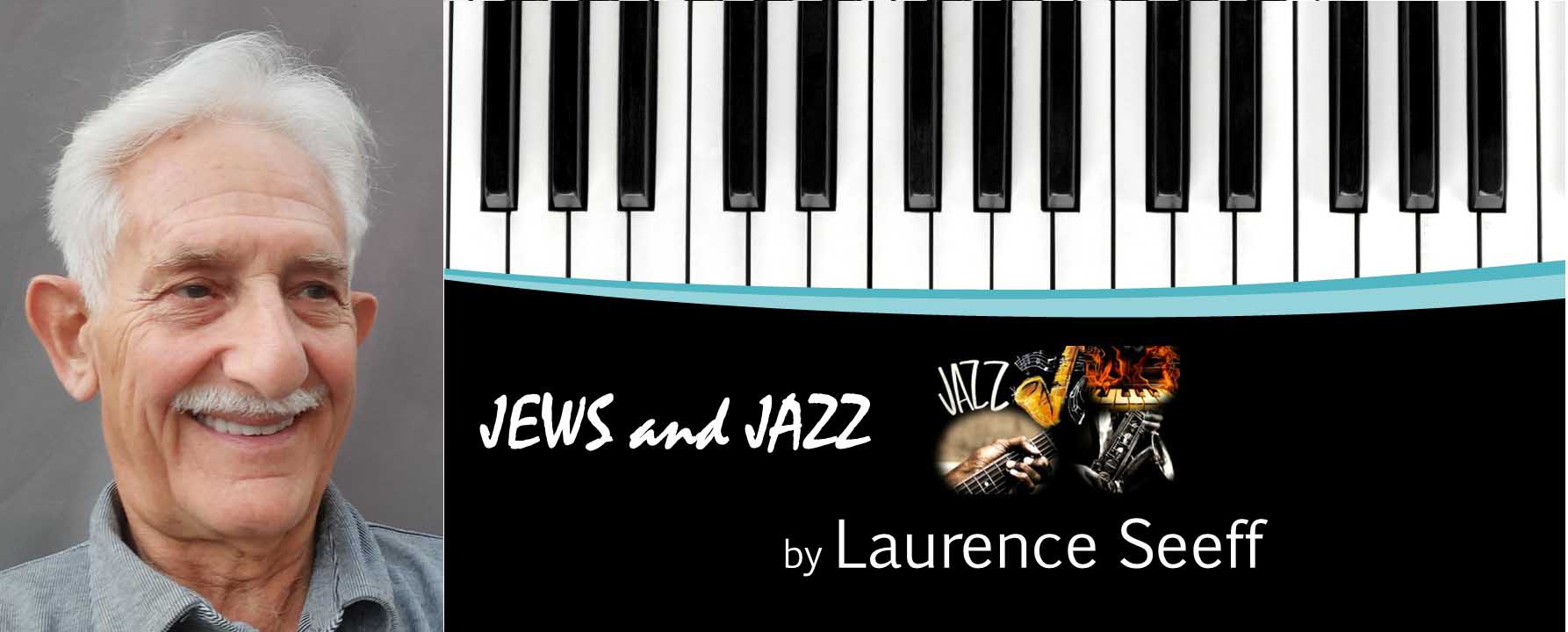
By MARTIN ZEILIG Jazz history is usually told through its most iconic names — Armstrong, Ellington, Parker, Davis — yet running alongside that familiar story is another, often under‑acknowledged one: the deep and enduring contribution of Jewish musicians, bandleaders, composers, and cultural intermediaries.
From the moment jazz emerged at the turn of the 20th century, Jews were not simply observers but active shapers of the music and the industry around it. Their influence — artistic, entrepreneurial, and cultural — has been both significant and, in many respects, disproportionately large. Jews and Jazz (171 pg. $18.75 US) a self‑published work by Laurence Seeff, brings this parallel narrative into sharp, affectionate focus.
Seeff is an ideal guide.
Born in London in 1951, he built a career that moved from statistics to energy policy in Paris, from financial markets at Bloomberg to corporate training in the City of London, all while writing poetry, songs, and humorous verse. Today he lives in Israel, where he continues to write, perform, learn Ivrit, and enjoy life with his large family. Through all these chapters runs a constant passion for jazz — a passion sparked more than fifty‑five years ago when he first heard Terry Lightfoot’s Jazzmen in a Bournemouth pub.
His writing blends clarity, humour, and genuine love for the music and the people who made it.
The musicians he profiles often came from immigrant families who brought with them the musical DNA of Eastern Europe — the cadences of synagogue chant, the urgency of klezmer, the cultural instinct for learning and artistic expression. When these sensibilities met the African American genius of early jazz, the result was a remarkable creative fusion.
Some figures, like Chico Marx, are better known for comedy than musicianship, yet Seeff reminds us that Chico was a serious pianist whose jazz‑inflected playing appeared in every Marx Brothers film and whose orchestra launched young talents like Mel Tormé. Others — Abe Lyman, Lew Stone, and Oscar Rabin — shaped the dance‑band era on both sides of the Atlantic.
Canadian readers will be pleased to find Morris “Moe” Koffman included as well: the Toronto‑born flautist and saxophonist whose “Swinging Shepherd Blues” became an international hit and whose long career at the CBC helped define Canadian jazz.
Seeff also highlights artists whose connection to jazz is more tangential but culturally revealing. Barbra Streisand, for example — a classmate and choir‑mate of Neil Diamond at Erasmus Hall High School — was never a natural jazz singer, yet her versatility allowed her to step into the idiom when she chose.
She opened for Miles Davis at the Village Vanguard in 1961 and, nearly half a century later, returned to the same club to promote Love Is the Answer, her collaboration with jazz pianist Diana Krall. Her contribution to jazz may be limited, but her stature as one of the greatest singers of all time is unquestioned.
Neil Diamond, too, appears in these pages.
Though not a jazz artist, he starred — with gusto, if not great acting finesse — in the 1980 remake of The Jazz Singer, 53 years after Al Jolson’s original. The film was not a success, nor was it truly a jazz picture, but its title and its star’s Jewish identity make it part of the cultural tapestry Seeff explores.
Diamond and Streisand recorded together only once, in 1978, on “You Don’t Bring Me Flowers,” a reminder of the long‑standing artistic ties between them.
Mel Tormé, by contrast, was deeply rooted in jazz. Nicknamed “The Velvet Fog,” he was a prodigy who sang professionally at age four, wrote his first hit at sixteen, drummed for Chico Marx, and recorded with Benny Goodman and Artie Shaw. Ethel Waters once said he was “the only white man who sings with the soul of a black man.” His story exemplifies the porous, collaborative nature of jazz.
Seeff also includes non‑Jewish figures whose lives intersected meaningfully with Jewish culture. Frank Sinatra — perhaps the greatest crooner of them all — was a steadfast supporter of Jewish causes, from protesting during the Holocaust to raising funds for Israel Bonds and the Hebrew University. His multiple visits to Israel, including a major concert in Jerusalem in 1975, underscore the depth of his connection.
Danny Kaye earns his place through his close work with Louis Armstrong, his pitch‑perfect scat singing, and his starring role in The Five Pennies, the biopic of jazz cornetist Red Nichols. Though not a jazz musician per se, his performances radiated a genuine feel for the music.
A later generation is represented by Harry Connick Jr., whose Jewish mother and New Orleans upbringing placed him at the crossroads of cultures. A prodigy who played publicly at age five, he went on to become one of the most successful jazz‑influenced vocalists of his era, with ten number‑one jazz albums.
Even Bob Dylan appears in Seeff’s mosaic — another reminder that Jewish creativity has touched every corner of modern music, sometimes directly through jazz, sometimes through the broader cultural currents that surround it.
Taken together, the concise portraits in Jews and Jazz form a lively, engaging mosaic — a celebration of creativity, resilience, and cross‑cultural exchange. They show how Jewish musicians helped carry jazz from vaudeville and dance halls into swing, bebop, cool jazz, pop, rock, and film music.
They remind us that jazz, at its heart, is a meeting place: a space where people of different backgrounds listen to one another, learn from one another, and create something larger than themselves.
For further information, contact the author at the following email address: laurenceseeff@yahoo.co.uk
Features
Jews in Strange Places
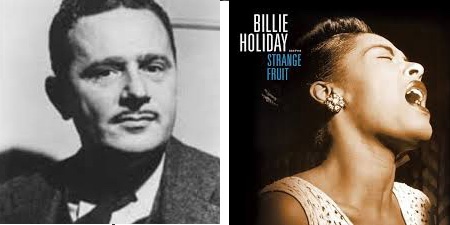
By DAVID TOPPER The Jewish contribution to 20th century popular music is well known. From Jerome Kern through to Stephen Sondheim, Jews played major roles as both composers and lyricists in the so-called Great American Songbook. (An exception is Cole Porter.) It continued in Musical Theatre throughout the rest of the century.
One very small piece of this story involves what Time magazine in the December 1999 issue called “the tune of the century.” First recorded sixty years before that, it is the powerful and haunting tune called “Strange Fruit,” which is about the lynching of black people in the southern USA. First sung by Billie Holiday in 1939, it became her signature tune.
So, why do I bring this up? Because there is a multi-layered Jewish connection to this song that is worth recalling, which may not be known to many readers.
Let’s start with the lyrics to “Strange Fruit,” which are the essence of this powerful piece:
Southern trees bear strange fruit,Blood on the leaves and blood at the root,Black bodies swinging in the southern breeze,Strange fruit hanging from the poplar trees.Pastoral scene of the gallant south,The bulging eyes and the twisted mouth,Scent of magnolias, sweet and fresh,Then the sudden smell of burning flesh.Here is fruit for the crows to pluck,For the rain to gather, for the wind to suck,For the sun to rot, for the trees to drop,Here is a strange and bitter crop.
Before becoming lyrics in a song, this poem stood alone as a potent statement about the lynchings still taking place throughout the American South at the time. The strong metaphorical imagery never explicitly mentions the lynching, which adds to the poetic power of this poem. Standing alone, I believe it’s an important protest verse from the 20th century.
Searching it on the internet, you may find the author listed as Lewis Allan. But that’s not his real name. “Lewis Allen” is the often-used pen name of Abel Meeropol, a Jewish High School teacher from the Bronx in New York. He and his wife, Anne (nee Shaffer), had two stillborn children with those names – a fact that adds a poignant element to this story.
The origin of the poem for Abel was a photograph he had seen of a lynching of black men in the South. I have seen such images, possibly even the one Abel saw: for example, a sepia photograph of two black men hanging from a long tree limb, and a large crowd of white people below (men, women and even children!), most seeming dressed in their Sunday best (some men with straw hats) looking up and gawking at the sight, some with smiles on their faces – as if attending a festive spectacle. Like Abel, I felt repelled by the picture: it turned my stomach. This communal display of horrific cruelty gave me a glimpse into Abel’s mind, and I understood how it compelled him to write about it. He thus wrote the poem, and it was published in a teacher’s magazine in 1937.
Being a songwriter too, in 1938 Abel added a melody and played it in a New York club he often attended. But here’s where this story’s documentation gets contradictory, depending upon who is recalling the events. The club owner knew Billie Holiday, and he showed the song to her. What her initial response was, we cannot know for sure. But we do know that in a relatively short time, she added it to her repertoire. It eventually became her signature tune. She initially sang it in public, but because of its popularity among her fans, there was pressure to record it too.
There were initial rejections from recording companies because of the controversial content. But Commodore Records took a chance and pressed the first recording in April 1939. This was the same year the movie “Gone with the Wind” came out; it was steeped in racial stereotyping. It was also sixteen years before Rosa Parks refused to give up her seat on a bus in Montgomery, Alabama.
As a record, the song obviously reached a large audience. Since the content was about racism, the song was seen as politically radical; not surprisingly, many radio stations banned it from the airwaves.
Furthermore, it’s also not surprising that Abel, a schoolteacher, was called to appear before a committee of New York lawmakers who were looking for communists in the schools. Possibly they were surprised to find that the poem and the song were written by a white man – and a Jew to boot. In particular, they wanted to know if he was paid by the Communist Party to write this song. He was not. And, in the end, they let him go. But shortly thereafter he quit his teaching job.
This took place in 1941 and was a precursor to the continued American obsession with communism into the 1950s, under Senator Joe McCarthy.
Indeed, that episode had an impact on Abel and Anne too. In 1953 Julius and Ethel Rosenberg were convicted of giving information about nuclear science to the Soviet Union, and they were the first married couple to be executed in the electric chair. They left two sons, Michael (age 10) and Robert (age 6). Apparently, immediate family members were reticent to get involved with the boys, possibly afraid of being accused of sympathizing with communism.
Enter Abel and Anne. Without a moment’s hesitation they stepped in, taking and raising the boys. As Michael and Robert Meeropol they eventually went on to become college professors – and naturally were active in social issues. Anne died in 1973. Abel died in 1986 in a Jewish nursing home in Massachusetts, after a slow decline into dementia. Long before that, Billie Holiday died in 1959, ravaged by the drug addition that took her life at forty-four years of age.
See why I called this a multi-layered Jewish story that’s worth telling?
To hear Billie Holiday singing “Strange Fruit” click here: Strange Fruit
Features
Is This the End of Jewish Life in Western Countries?

By HENRY SREBRNIK “Globalize the Intifada” has been the chant echoing through streets since October 7th, 2023. It was never a metaphor, and we now see the gruesome results across the western world, from Australia to Canada: the rise of groups of large, active networks of Islamist and anti-Zionist organizations.
Jews in the West are discovering that the nations they defended, enriched, and profoundly shaped have become increasingly inhospitable. After the Holocaust, explicit Jew-hatred became unfashionable in polite society, but the impulse never disappeared. The workaround was simple: separate Zionism from Judaism in name, then recycle every old anti-Jewish trope and pin it on “the Zionists.”
We have seen the full legitimization of genocidal anti-Zionism and its enthusiastic adoption by large segments of the public. The protests themselves, as they began immediately on October 7th, were celebrations of the Hamas massacres. The encampments, the building occupations, the harassment campaigns against Jewish students, the open calls for intifada, the attacks on Jews and Jewish places have become our new norm. History shows us that antisemitism does not respond to reason, incentive or the honest appeals of the Jewish community.
Outside the United States, there is no Western political establishment with either the will or the capability to address this problem, let alone reverse its growth. I’m sorry to say this, but the future of Western Europe, Canada, Australia, and New Zealand is likely to be increasingly Jew-free.
Today, police stand and watch mobs chant for Israel’s destruction, call for the genocide of its people, harass visibly Jewish citizens, and drive antisemitic intimidation deep into urban life. They now believe their job is to enforce the law only if it does not risk upsetting violent constituencies. This makes Jews expendable, because defending them risks confrontation. This was very clear in the Bondi Beach massacre.
Jews are again donning caps instead of kippot, dressing generically with no cultural markers, and avoiding even a tote bag with Hebrew on it. A corrosive creep toward informal segregation in retail and service sectors is occurring, as Jewish customers report being refused service. A mezuzah hanging from a rideshare mirror leads to cancellations. When Jews express frustration, they are accused of exaggeration or attempting to suppress criticism of Israel. Jewish fear is not treated as a real problem.
“Jews Are Being Sent Back into Hiding,” the title of a Dec. 15 article in the New York Free Press by David Wolpe and Deborah Lipstadt, asserts that the attacks on Jews, including physical assaults, social media campaigns and, most tragically, the recent murders in Australia, are part of a purposive campaign designed to make Jews think twice about gathering with other Jews, entering a synagogue, going to kosher restaurants, putting a mezuzah on the doorpost of their apartments or dorm rooms, or wearing a Jewish star around their necks.
“We know of no one who would consider giving a niece, nephew, grandchild, or young friend a Jewish star without first asking permission of their parents,” they write. The unspoken, and sometimes spoken, question is: “Might wearing a star endanger your child’s well-being?”
Recently, a prominent American rabbi was entering a Target store in Chicago with her grandson, whom she had picked up from his Jewish day school. As they walked into the store the 10-year-old reached up and automatically took off his kippah and put it in his pocket. Seeing his grandmother’s quizzical look, he explained: “Mommy wants me to do that.”
Borrowing a phrase from another form of bigotry, they contend that Jews are going “back into the closet.” No public celebration of Hanukkah took place in 2025 without a significant police presence. Some people chose to stay home.
Lipstadt and Wolpe know whereof they speak. They are respectively a professor of history and Holocaust studies who served as the Biden administration’s ambassador tasked with combating antisemitism, the other a rabbi who travels to Jewish communities throughout the world, and who served on Harvard’s antisemitism task force in the aftermath of the October 7, 2023 pogrom.
What the world has seen over the past two years is a continual, often systematic attempt to terrorize Jews. When political leaders fail to condemn rather than merely “discourage” chants of “globalize the intifada,” we are seeding the ground for massacres like the Hannukah one in Sydney.
If each Jewish holiday will now be seen by antisemites as an opportunity for terror, then the prognosis for diaspora Jewry is bleak. There will be fewer public events, more alarms, more bag checks at doors; there will have to be more security and more police. Unless things change, Jewish life in the diaspora will become more sealed off from the larger society.
Why has this failure come about? Confronting antisemitism, stopping the mobs, challenging the activists, and disciplining antisemitic bureaucrats all carry electoral risk for politicians; Jews are demographically irrelevant, especially compared with Muslim voters, with the U.S. being the only partial exception.
There are those who suggest Jews stop donating funds to educational and other institutions that have turned against us. At this point, I doubt very much that withdrawing dollars will have an impact. For every dollar withdrawn, there will be 100 from Qatar and other sources in its place.
Throughout history, the way a society treats its Jews predicts its future with unerring accuracy. If Jews leave, it will be because a civilization that will not defend its Jews will also defend next to nothing and may itself not survive.
Henry Srebrnik is a professor of political science at the University of Prince Edward Island

